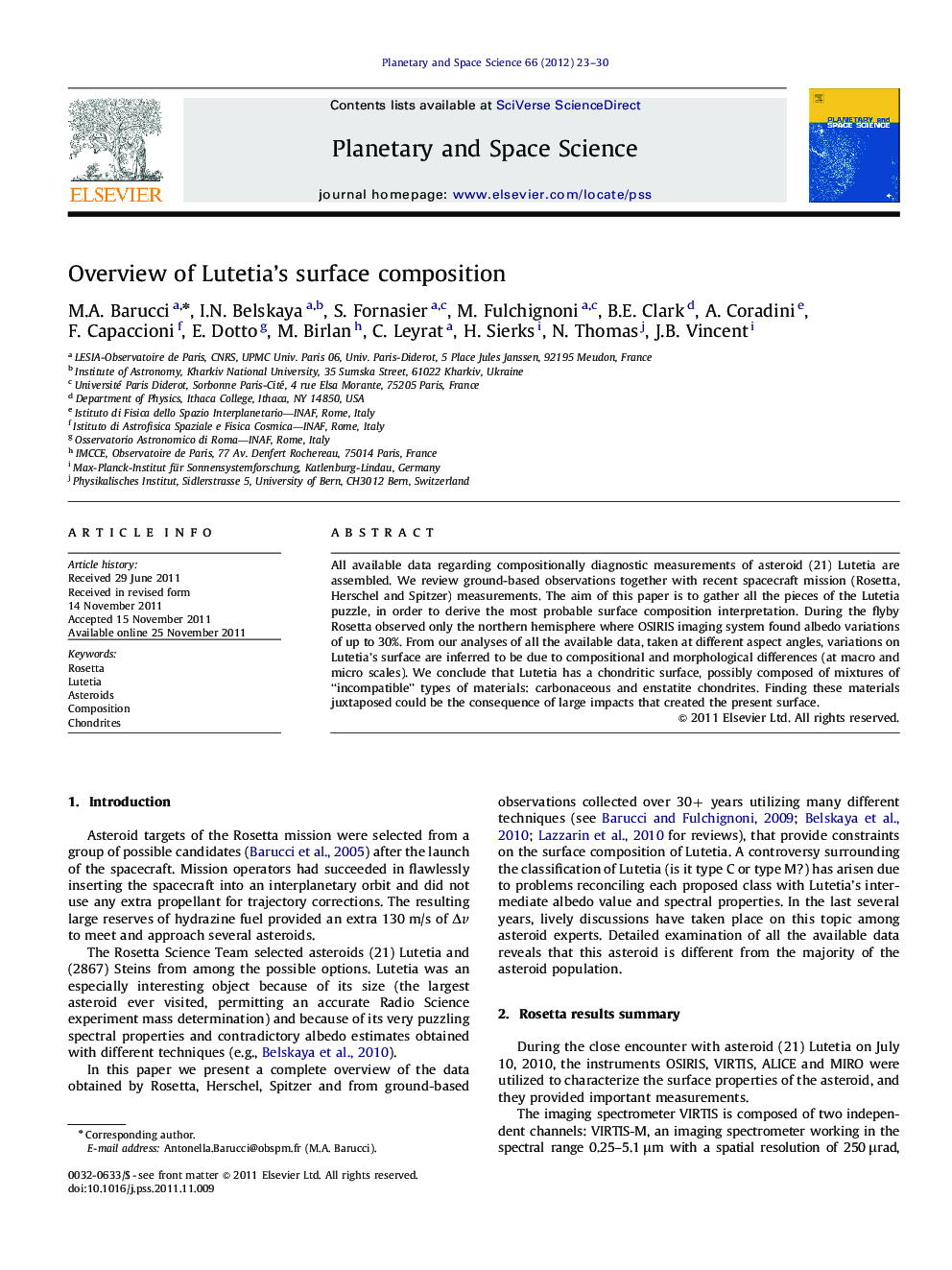| Article ID | Journal | Published Year | Pages | File Type |
|---|---|---|---|---|
| 1781479 | Planetary and Space Science | 2012 | 8 Pages |
All available data regarding compositionally diagnostic measurements of asteroid (21) Lutetia are assembled. We review ground-based observations together with recent spacecraft mission (Rosetta, Herschel and Spitzer) measurements. The aim of this paper is to gather all the pieces of the Lutetia puzzle, in order to derive the most probable surface composition interpretation. During the flyby Rosetta observed only the northern hemisphere where OSIRIS imaging system found albedo variations of up to 30%. From our analyses of all the available data, taken at different aspect angles, variations on Lutetia's surface are inferred to be due to compositional and morphological differences (at macro and micro scales). We conclude that Lutetia has a chondritic surface, possibly composed of mixtures of “incompatible” types of materials: carbonaceous and enstatite chondrites. Finding these materials juxtaposed could be the consequence of large impacts that created the present surface.
► Review of ground-based and spacecraft (Rosetta and Herschel) observations of (21) Lutetia. ► OSIRIS observations show rich surface properties with albedo variations up to 30%. ► Lutetia is clearly an old object with complex surface. ► Compositional mixture of “incompatible” materials like carbonaceous and enstatite chondrites.
